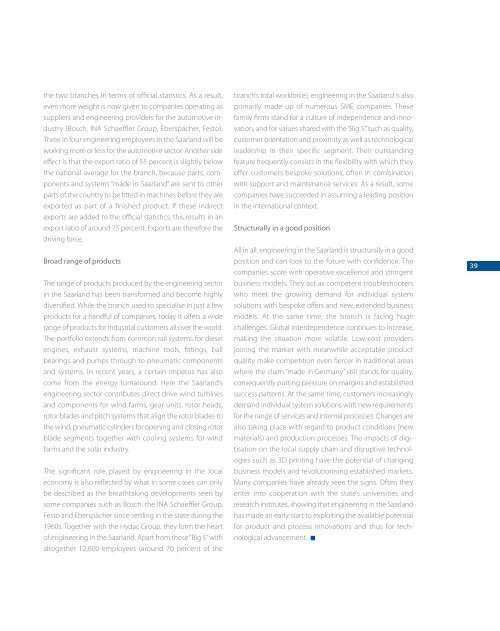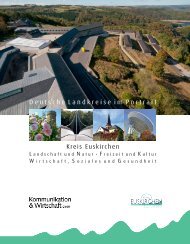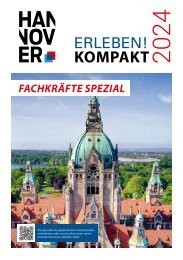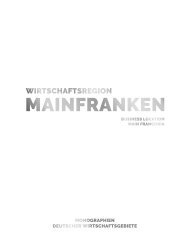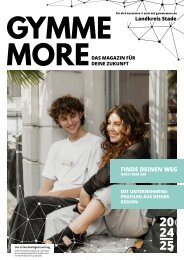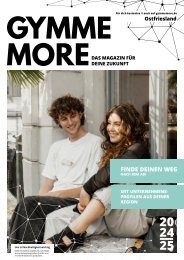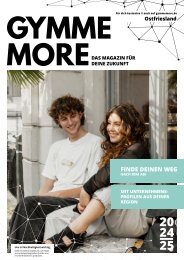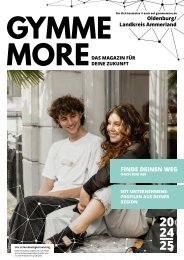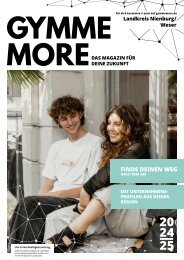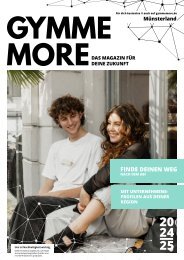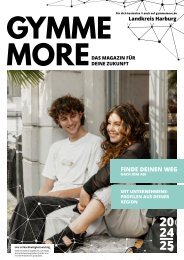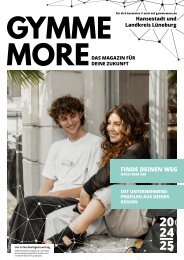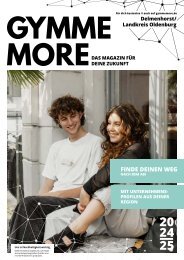Monographie_Saarland
Create successful ePaper yourself
Turn your PDF publications into a flip-book with our unique Google optimized e-Paper software.
the two branches in terms of official statistics. As a result,<br />
even more weight is now given to companies operating as<br />
suppliers and engineering providers for the automotive industry<br />
(Bosch, INA Schaeffler Group, Eberspächer, Festo).<br />
Three in four engineering employees in the <strong>Saarland</strong> will be<br />
working more or less for the automotive sector. Another side<br />
effect is that the export ratio of 55 percent is slightly below<br />
the national average for the branch, because parts, com -<br />
ponents and systems “made in <strong>Saarland</strong>” are sent to other<br />
parts of the country to be fitted in machines before they are<br />
exported as part of a finished product. If these indirect<br />
exports are added to the official statistics, this results in an<br />
export ratio of around 75 percent. Exports are therefore the<br />
driving force.<br />
Broad range of products<br />
The range of products produced by the engineering sector<br />
in the <strong>Saarland</strong> has been transformed and become highly<br />
diversified. While the branch used to specialise in just a few<br />
products for a handful of companies, today it offers a wide<br />
range of products for industrial customers all over the world.<br />
The portfolio extends from common rail systems for diesel<br />
engines, exhaust systems, machine tools, fittings, ball<br />
bearings and pumps through to pneumatic components<br />
and systems. In recent years, a certain impetus has also<br />
come from the energy turnaround. Here the <strong>Saarland</strong>’s<br />
engineering sector contributes direct drive wind turbines<br />
and components for wind farms, gear units, rotor heads,<br />
rotor blades and pitch systems that align the rotor blades to<br />
the wind, pneumatic cylinders for opening and closing rotor<br />
blade segments together with cooling systems for wind<br />
farms and the solar industry.<br />
The significant role played by engineering in the local<br />
economy is also reflected by what in some cases can only<br />
be described as the breathtaking developments seen by<br />
some companies such as Bosch, the INA Schaeffler Group,<br />
Festo and Eberspächer since settling in the state during the<br />
1960s. Together with the Hydac Group, they form the heart<br />
of engineering in the <strong>Saarland</strong>. Apart from these “Big 5” with<br />
altogether 12,600 employees (around 70 percent of the<br />
branch’s total workforce), engineering in the <strong>Saarland</strong> is also<br />
primarily made up of numerous SME companies. These<br />
family firms stand for a culture of independence and innovation,<br />
and for values shared with the “Big 5” such as quality,<br />
customer orientation and proximity as well as technological<br />
leadership in their specific segment. Their outstanding<br />
feature frequently consists in the flexibility with which they<br />
offer customers bespoke solutions, often in combination<br />
with support and maintenance services. As a result, some<br />
companies have succeeded in assuming a leading position<br />
in the international context.<br />
Structurally in a good position<br />
All in all, engineering in the <strong>Saarland</strong> is structurally in a good<br />
position and can look to the future with confidence. The<br />
com panies score with operative excellence and stringent<br />
business models. They act as competent troubleshooters<br />
who meet the growing demand for individual system<br />
solutions with bespoke offers and new, extended business<br />
models. At the same time, the branch is facing huge<br />
challenges. Global interdependence continues to increase,<br />
making the situation more volatile. Low-cost providers<br />
joining the market with meanwhile acceptable product<br />
quality make competition even fiercer in traditional areas<br />
where the claim “made in Germany” still stands for quality,<br />
consequently putting pressure on margins and established<br />
success patterns. At the same time, customers increasingly<br />
demand individual system solutions with new requirements<br />
for the range of services and internal processes. Changes are<br />
also taking place with regard to product conditions (new<br />
materials) and production processes. The impacts of digi -<br />
tisation on the local supply chain and disruptive technol -<br />
ogies such as 3D printing have the potential of changing<br />
business models and revolutionising established markets.<br />
Many companies have already seen the signs. Often they<br />
enter into cooperation with the state’s universities and<br />
research institutes, showing that engineering in the <strong>Saarland</strong><br />
has made an early start to exploiting the available potential<br />
for product and process innovations and thus for tech -<br />
nological advancement.<br />
39


